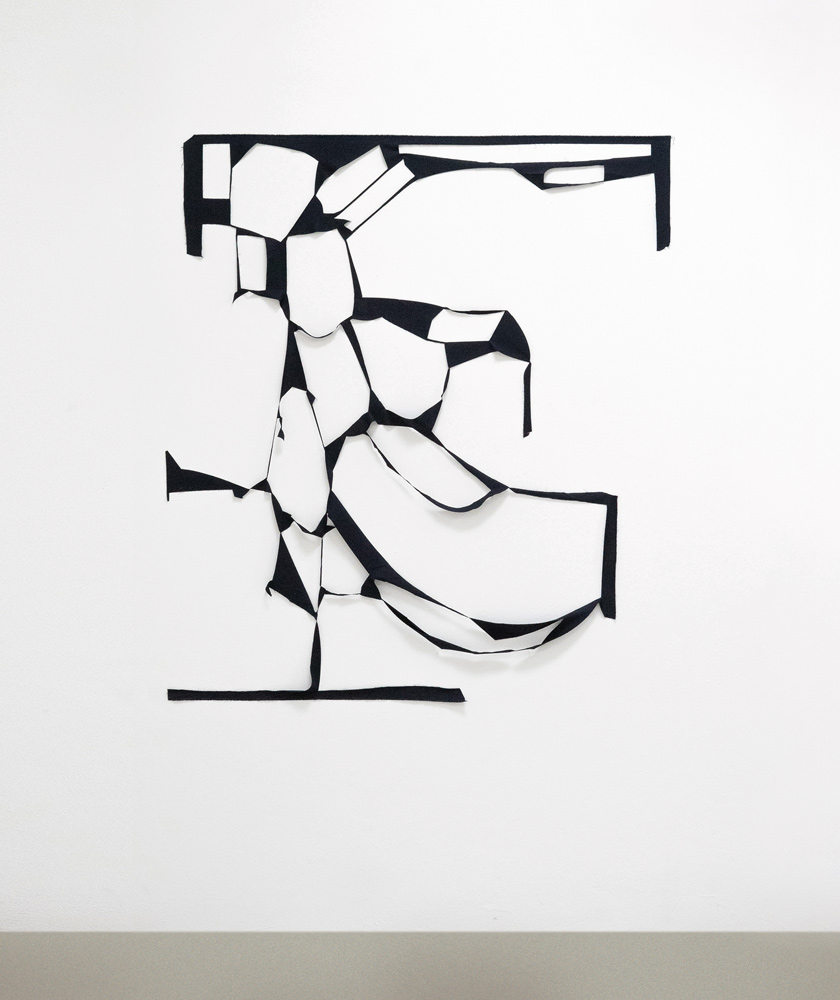
Aktuell

Marion Baruch, Déchiqueté – Squarciato; Seide, Baumwolle, 190x169 cm, 2015; Courtesy: Marion Baruch Studio, Foto: Peter Colombo
DÉCHIQUETÉ — SQUARCIATO
MARION BARUCH
Eröffnung: 4.7.2025, 18.30 Uhr
Ausstellungsdauer: 5.7.–9.8., 3.9.–27.9.2025
Öffnungszeiten: Mi–Sa, 10.30–17.00 Uhr
Marion Baruch (geb. 1929) schafft postminimalistische, poetisch-semantisierende Werke, die wesentlich aus textilen Materialien, aus Produktionsresten der Textilindustrie bestehen. Baruchs Stoffgefüge sind formal dialektisch, sie weisen eine Art Doppelstatus auf. Sie sind einerseits object-trouvé, bloßes Material, andererseits erlangen sie durch Interpretation und Inszenierung, durch Hängung und Verspannung, den Status einer piktoralen, von starken Kontrasten und Negativformen bestimmten Formation autonomer Präsenz, die im Raum eine grafische, beinahe gestische Geltung entfaltet. Jenseits der ästhetischen Anmutung bergen Baruchs Stoffformationen auch stets eine poetisch-narrative Dimension. Der bildhaften und räumlich-aleatorischen Präsenz steht somit eine visuell-poetische gegenüber, ohne dabei die körperliche, kinästhetische und taktile Dimension der Schnittreste, jener Verspannungen von Zerrissenem (squarciato), in den Hintergrund zu drängen und zu überschreiben.
Marion Baruch wurde 1929 in in Temeswar, Rumänien geboren, sie lebt und arbeitet heute in Gallarate, Italien. Baruch kehrte nach über zwanzig Jahren aus Paris, wo sie seit 1993 lebte und unter dem Labelnamen „Name Diffusion“ kritisch zum System der Kunst, dem Kunstmarkt, seinen Regeln und Gesetzen arbeitete, nach Italien, ihrem Studien- und Lebensmittelpunkt der 50er- und 60er-Jahre zurück. Seit 2012 arbeitet sie, nunmehr wieder unter ihrem Eigennamen, mit Stoffresten der Textilindustrie, die seither das Fundament ihrer ästhetischen Praxis bilden.
Marion Baruch wurde 1929 in in Temeswar, Rumänien geboren, sie lebt und arbeitet heute in Gallarate, Italien. Baruch kehrte nach über zwanzig Jahren aus Paris, wo sie seit 1993 lebte und unter dem Labelnamen „Name Diffusion“ kritisch zum System der Kunst, dem Kunstmarkt, seinen Regeln und Gesetzen arbeitete, nach Italien, ihrem Studien- und Lebensmittelpunkt der 50er- und 60er-Jahre zurück. Seit 2012 arbeitet sie, nunmehr wieder unter ihrem Eigennamen, mit Stoffresten der Textilindustrie, die seither das Fundament ihrer ästhetischen Praxis bilden.

